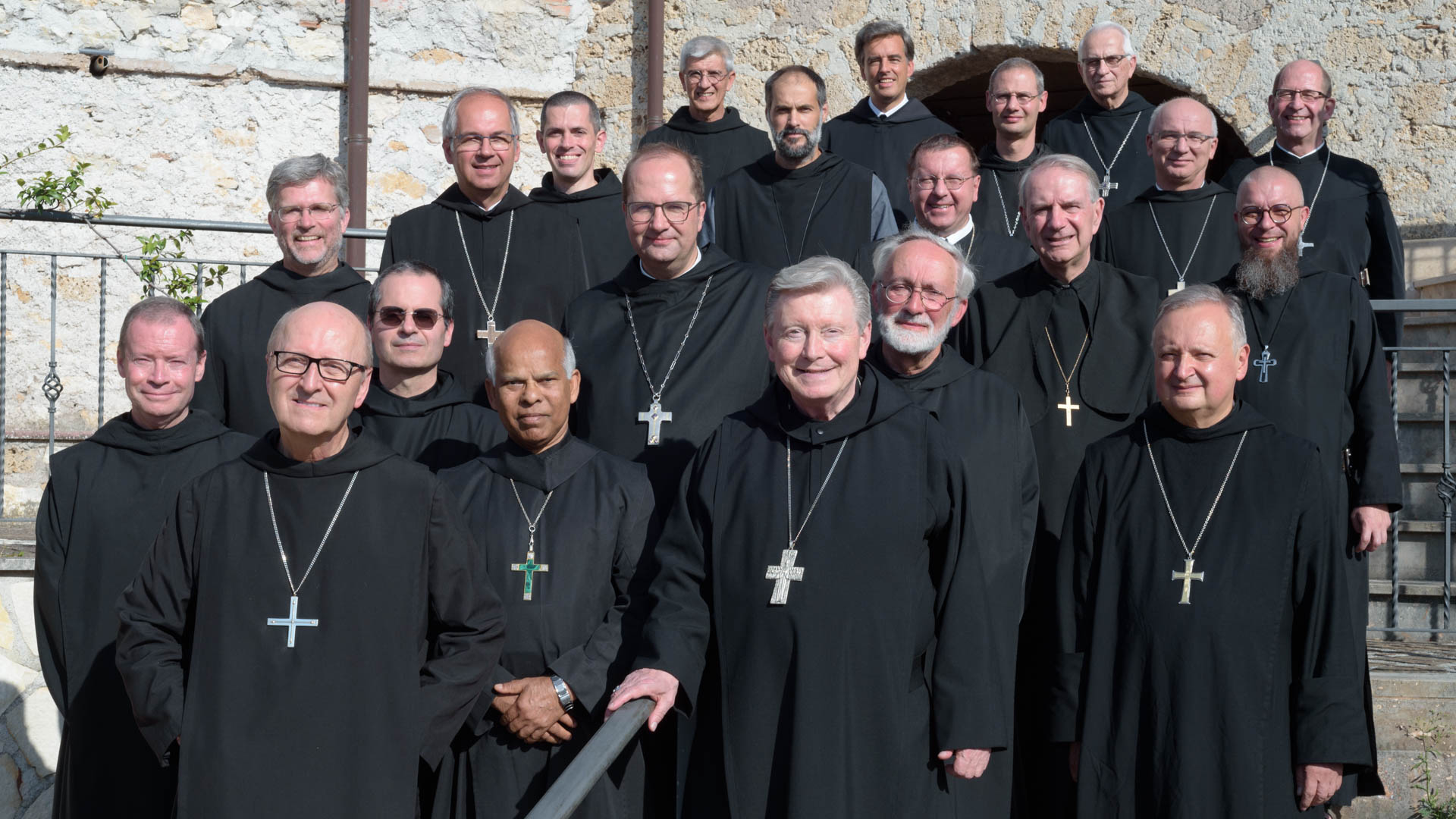Abbot Primate Gregory J. Polan, OSB, and the abbots president of the congregations that constitute the Benedictine Confederation met together from 29 August – 2 September 2022 at the Monastery of St. Scholastica in Subiaco, Italy, for their annual synod. During the course of this meeting, the abbot primate and abbots president examined various issues impacting the Church and the Benedictine Confederation. In addition, the synod examined annual reports on the principal activities and events of the Primatial Abbey of Sant’Anselmo, Pontifical Athenaeum of Sant’Anselmo, and Collegio Sant’Anselmo. Their meetings were punctuated by daily celebrations of Lauds, Mass and Vespers with the community of Saint Scholastica.
The following is a short list of the important issues that were discussed:
- Status reports of the congregations delivered by the abbots president;
- Status reports from the Athenaeum’s Rector Fr. Bernhard Eckerstorfer, the Collegio’s Prior Fr. Mauritius Wilde and Sant’Anselmo Treasurer Fr. Geraldo Gonzalez y Lima;
- New legal procedures such as dispensation, exclaustration, brothers as superiors, etc. delivered by Abbot Franziskus Berzdorf;
- Reflection and discussion regarding the procedures for updating the data of the Congregations / Catalogus;
- Report: Commission for the revision of the Regolamento Economico, i.e., the Economic Regulations of Sant’Anselmo;
- Report on the Communio Internationalis Benedictinarum by Sr. Lynn McKenzie;
- Report on the developments in the Benedictine Liturgical Calendar by Abbot Jeremias Schröder; and a
- Discussion of the procedures for the 2024 Congress of Abbots
On Wednesday, the abbots president took a short trip to the municipality of Vicovaro. The attraction that the place represented for the participants of the synod is evidenced by the story that Pope Saint Gregory the Great makes in the passage from Chapter 3 of the Dialogues, the biography of Saint Benedict. This chapter tells the story of a monastery of monks in Vicovaro who, after asking Benedict to be their abbot, resisted his virtuous observance of monastic life and, in an effort to be rid of him, attempted to poison his wine.
Vicovaro itself is little known even by those who today, in the 21st century, take refuge in the patronage of Saint Benedict and live the Benedictine monastic life.What physical traces are there today that connect with such a suggestive story? The presiding abbots came across, on a brief guided tour by a young man who knew the secrets of the place very well, a Franciscan church and convent now a residence, built from the rock on the side of a hill. Going down the slope, between the foundations of the convent, there is a vast set of natural stone caves where it is plausibly conjectured that there lived, in late-ancient times, a number of solitaries who, at a certain point in the evolution of the monastic community life, they would have asked Saint Benedict to be their abbot, as Saint Gregory narrates.
More than two centuries ago, the Franciscan friars built a simple and austere, but very picturesque, Hermitage of Saint Benedict in one of the last corners of the place, which connects with another attraction of an archaeological nature that the presiding abbots also had the pleasure of exploring on foot: the beginning – preserved intact – of a Roman aqueduct that, in those ancient times, traveled the 60 kilometers that separates this place from the city of Rome, reaching the main gate of the city.
After the trip, the monks of the Monastery of St. Scholastica joined the abbots president for supper in the guest refectory.


